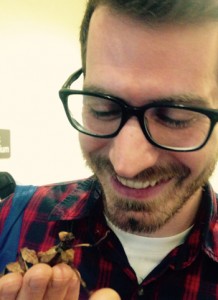In this post, student blogger Kym reports about their visit to the YES Meeting.
This year, three of us from the Functional Aquatic Ecotoxicology team submitted abstracts to attend the SETAC YES Meeting (a.k.a the Society of Environmental Toxicology and Chemistry’s Young Environmental Scientists Meeting). This is a great way for young environmental scientists to be exposed to the world of conferences and gain experience presenting their research in front their peers. What is also awesome about the YES Meeting, is that SETAC financially supports this meeting waiving all registration fees. For any of you that are fellow students, I am sure you can appreciate how great it is to have this kind of financial support, as the cost of attending most of the larger meetings can seem like an unsurmountable hurdle.
This meeting is also unique in that is it completely organized by young scientists for young scientists, which means there is a focus on short course topics that are relevant to young researchers. Our first day was focused on how to teach, for those people who are interested in continuing on in academia, especially in the U.S.A, this is an important topic. Student reviews can heavily influence whether or not someone is given tenure. The YES Meeting’s first lecture by Dr. Marianne Shockley, however, had a little bit of a different spin. She addressed the conference on how to teach to the public and inform people from outside academia of scientific research. It was such an interesting talk as she employed teaching techniques to hold the audiences’ attention. I am sure everyone has sat in a one or two hour lecture where they paid attention for about ten minutes and then zoned out for the rest of the time. Dr. Shockley provided examples of how to switch it up while teaching in order to hold your audiences’ attention. As an entomologist, she brought out samples of insects, both common and exotic, and passed them around the audience. Instead of lecturing, she interacted with the audience, asking us lots of questions and encouraging our responses. She also spoke about the importance of science outreach and service. Something that is crucial if we want to pass on our knowledge to the masses.
As a participant of the YES meeting, this lecture brought up a topic to which I myself had not given much thought. Teaching. However, as I mentioned before, in academia, is an essential tool. The tips and tricks about teaching, which hit on the different modes of learning, were definitely ingrained by the use of insects as learning tools. You can understand how the use of live species could reach a range of learning types, within the general public, and the academic sector alike.
While her lecture was very interesting, the highlight, I think, for most people, was the chance to hold an Australian Leaf bug after the talk!
Watch out for my next post on the YES meeting covering students’ presentations, pub visits, ….

